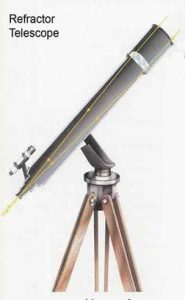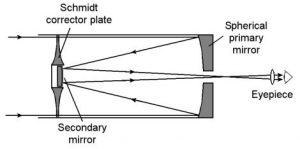 Astronomy is one of those things where bigger is better. The bigger the telescope, the better it works. Also you get what you pay for; if it’s cheap to buy, good chance it will be cheaply made and inferior quality. If you are thinking of starting a hobby in astronomy, you need to have a budget. This will allow you to plan what you can get for your money. Be aware that telescopes are better large than small as small telescopes are limited and you may be disappointed by what you can see.
Astronomy is one of those things where bigger is better. The bigger the telescope, the better it works. Also you get what you pay for; if it’s cheap to buy, good chance it will be cheaply made and inferior quality. If you are thinking of starting a hobby in astronomy, you need to have a budget. This will allow you to plan what you can get for your money. Be aware that telescopes are better large than small as small telescopes are limited and you may be disappointed by what you can see.
Note. A good pair of binoculars on a tripod can be better than a cheap telescope.
Refractor Telescope
Refractor telescopes are what most people think of when they talk about telescope design. Light entering the front of the scope passes through an objective lens made with a determined convex shape to direct light to a point at the rear of the scope. This is known as the focal point where the light rays converge before beginning to spread out again. The eye piece is placed just behind the focal point where the light is magnified back into a straight line where the eye can see it. By moving the eyepiece closer or further from the focal point, the image can be focused for the eye relief
The greater the aperture of the objective lens, the more light that can be collected into the telescope making the image brighter. Refractors rely on the use of good quality lens to limit distortion and corruption of the light source. This can make the telescope very expensive as the grinding of lens is often time consuming and the special glass made in small quantities. This type of telescope is best used for viewing small bright objects such as planets and star clusters.
Reflector Telescopes
Reflector telescopes are the most commonly used telescope in astronomy. This is partly due to the lower purchase cost and also the general aperture can be much greater for the same price of a refractor. Invented by Isaac Newton in 1671, the Newtonian telescope uses concave and convex mirrors to bend the light back and forward through the scopes body to minimise the length. As the aperture increases, the length increases to compensate the angulations of the mirror. As the light enters the front of the scope it travels directly to a concave mirror at the base where the light is reflected back towards the front, angled inward by the shape of the mirrors surface.

Depending on the design, a secondary mirror is placed in line with the narrowing light reflecting it towards the eyepiece. This can be at right angles to the tube with the eyepiece positioned on the side.

With the Schmidt Cassegrain the light enters via a correction lens and passed through this towards the rear primary mirror. This concave mirror (having a hole in the centre), diverts the light back towards the front where another convex mirror is positioned in the centre of the corrective lens. The light is folded back towards the hole in the centre of the primary mirror to a focal point beyond the rear of the telescope. A 90 degree prism or mirror redirects the light into an eyepiece mounted on the rear of the scope. These folded style reflectors are compact and easy to carry.
A 90 degree prism or mirror redirects the light into an eyepiece mounted on the rear of the scope. These folded style reflectors are compact and easy to carry.